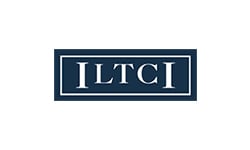Actuarial science principles can contribute to better retirement outcomes. Actuarial science allows personal retirement planning to be treated more like a defined-benefit pension plan. These plans can pool financial market risks between different cohorts and can pool longevity risk between different individuals within the same cohort.
Download the White Paper from OneAmerica
By including actuarial science, longevity-protected spending can be determined in advance through these pooling mechanisms.
In contrast, those relying on their own devices to manage market and longevity risks must behave conservatively with regard to market return assumptions and the planning horizon, lest they run out of assets. And even with conservative spending assumptions, investment portfolios do not have guarantees and remain vulnerable to depletion.
To compare with investments, we can think of the combination of whole life insurance and income annuities as “actuarial bonds” with an average maturity equal to life expectancy.
To compare with investments, we can think of the combination of whole life insurance and income annuities as “actuarial bonds” with an average maturity equal to life expectancy. These financial products, which invest primarily in a fixed income portfolio, can better hedge a retiree’s personal income needs. By combining them, the overall planning horizon can essentially be fixed at something close to life expectancy, as whole life insurance provides a higher implied return when the realized lifetime is short, and income annuities provide a higher return when the realized lifetime is long. This is a more effective way to use fixed income assets than as a portfolio volatility reduction tool.
We confirm these statements through case studies with 35-year old and 50-year old couples, comparing three retirement scenarios for each couple. The first scenario uses a term life policy to meet life insurance needs until retirement, and otherwise draws retirement income with systematic withdrawals from an investment portfolio. The second scenario also uses term life insurance. However, this scenario adds partial annuitization with a joint-life income annuity to provide income along with portfolio withdrawals from the remaining non-annuitized assets. The third scenario maintains a permanent death benefit with whole life insurance, and uses a single-life income annuity along with systematic withdrawals from the remaining non-annuitized assets for retirement income. Retirees may feel more comfortable with the idea of partial annuitization when their household balance sheet also includes whole life insurance in retirement, because the death benefit from the whole life insurance may be viewed as a “refund” of the monies used for the income annuity.
By tracking the course of income and legacy wealth through age 100 for each scenario, we find that the inclusion of an income annuity can allow for greater income throughout retirement. Our simulations show that the risk pooling features of the income annuity are essentially a more significant factor in boosting retirement income than is the greater upside potential offered through increased reliance on investments. This is because incorporating the whole life insurance, even though it requires larger premiums than the term life insurance, supports a higher income level (by justifying partial annuitization) while also supporting a larger legacy. Traditionally there is a tradeoff between enjoying more income and leaving a larger legacy, but this integrated approach actually allows for increases in both income and legacy. We can indeed conclude that an integrated approach is a more efficient retirement income strategy.
We find substantive evidence that an integrated approach with investments, whole life insurance, and income annuities can provide more efficient retirement outcomes than relying on investments alone.
Because whole life insurance can play an important role in producing more efficient retirement outcomes, younger individuals planning for both retirement and life insurance needs may view whole life insurance in a new light as a powerful retirement income planning tool.
The recent conventional wisdom of “buy term and invest the difference” is less effective than many realize when viewed in terms of the risk management needs of a retirement income plan.
To read more on this, Download the White Paper from OneAmerica















-CMYK.png?width=250&name=LifeSecureLogo(F)-CMYK.png)



.png?width=860&height=245&name=Full%20Color%20Krause%20Group%20Horizontal%20(002).png)


